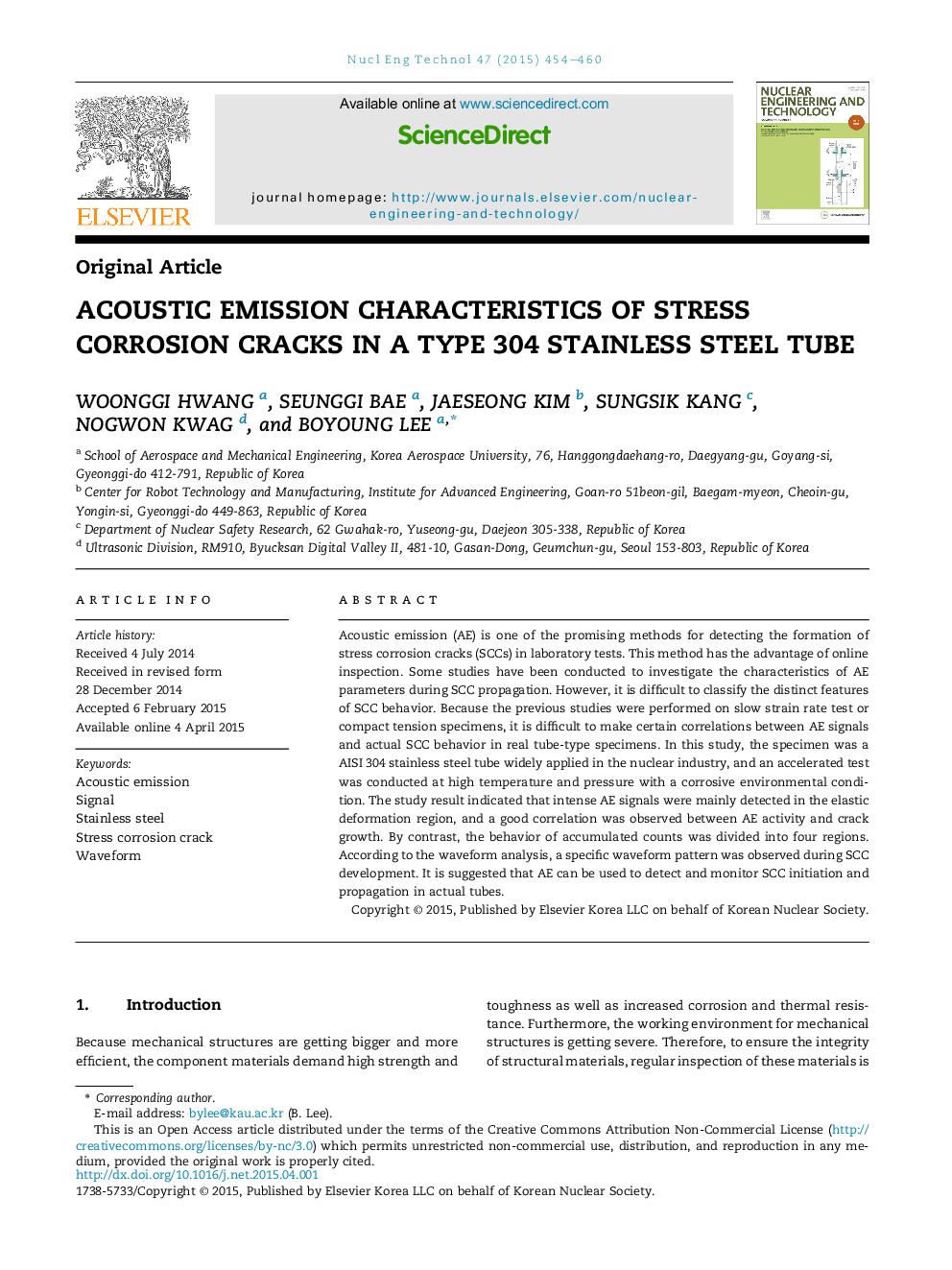| Article ID | Journal | Published Year | Pages | File Type |
|---|---|---|---|---|
| 1740149 | Nuclear Engineering and Technology | 2015 | 7 Pages |
Acoustic emission (AE) is one of the promising methods for detecting the formation of stress corrosion cracks (SCCs) in laboratory tests. This method has the advantage of online inspection. Some studies have been conducted to investigate the characteristics of AE parameters during SCC propagation. However, it is difficult to classify the distinct features of SCC behavior. Because the previous studies were performed on slow strain rate test or compact tension specimens, it is difficult to make certain correlations between AE signals and actual SCC behavior in real tube-type specimens. In this study, the specimen was a AISI 304 stainless steel tube widely applied in the nuclear industry, and an accelerated test was conducted at high temperature and pressure with a corrosive environmental condition. The study result indicated that intense AE signals were mainly detected in the elastic deformation region, and a good correlation was observed between AE activity and crack growth. By contrast, the behavior of accumulated counts was divided into four regions. According to the waveform analysis, a specific waveform pattern was observed during SCC development. It is suggested that AE can be used to detect and monitor SCC initiation and propagation in actual tubes.
